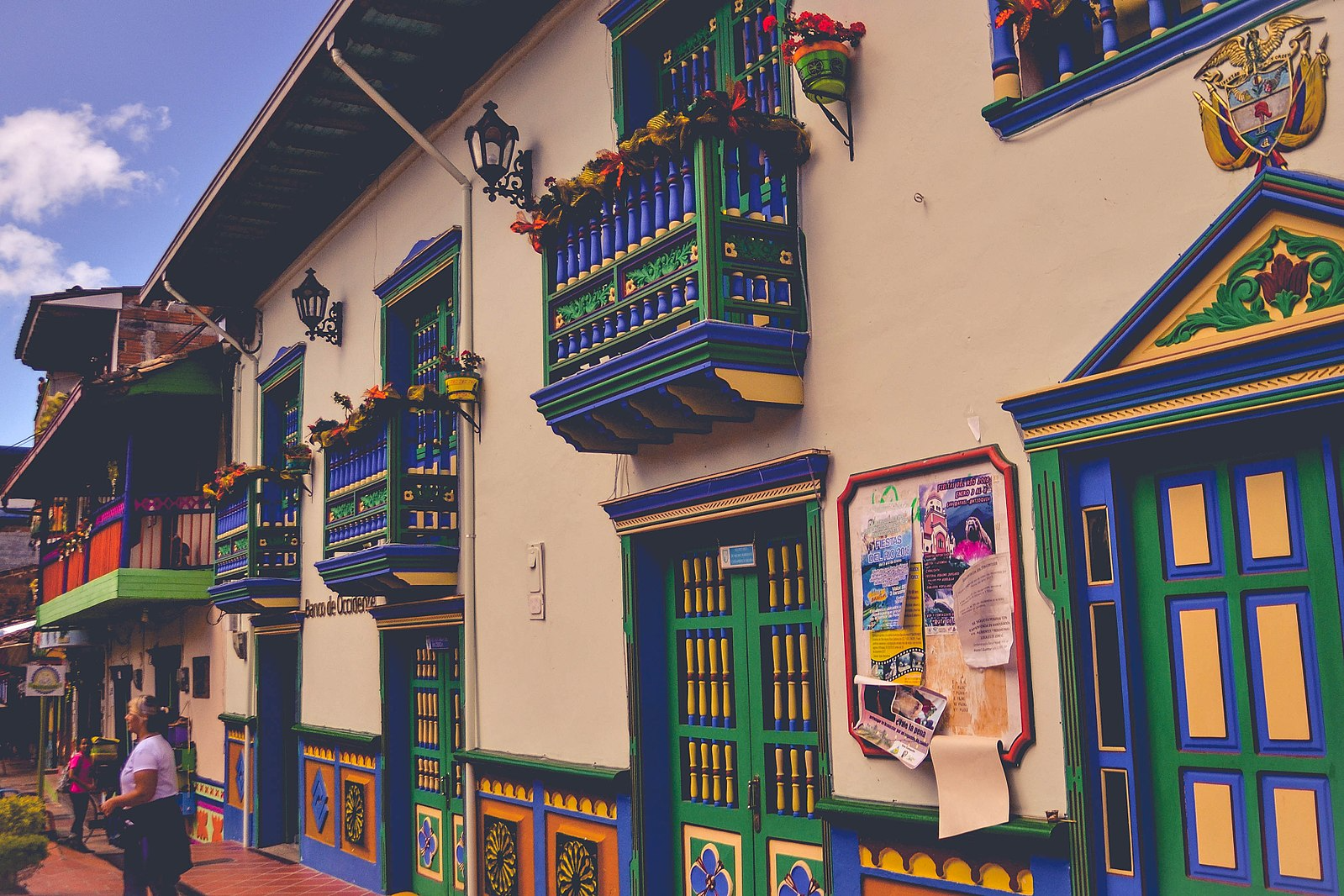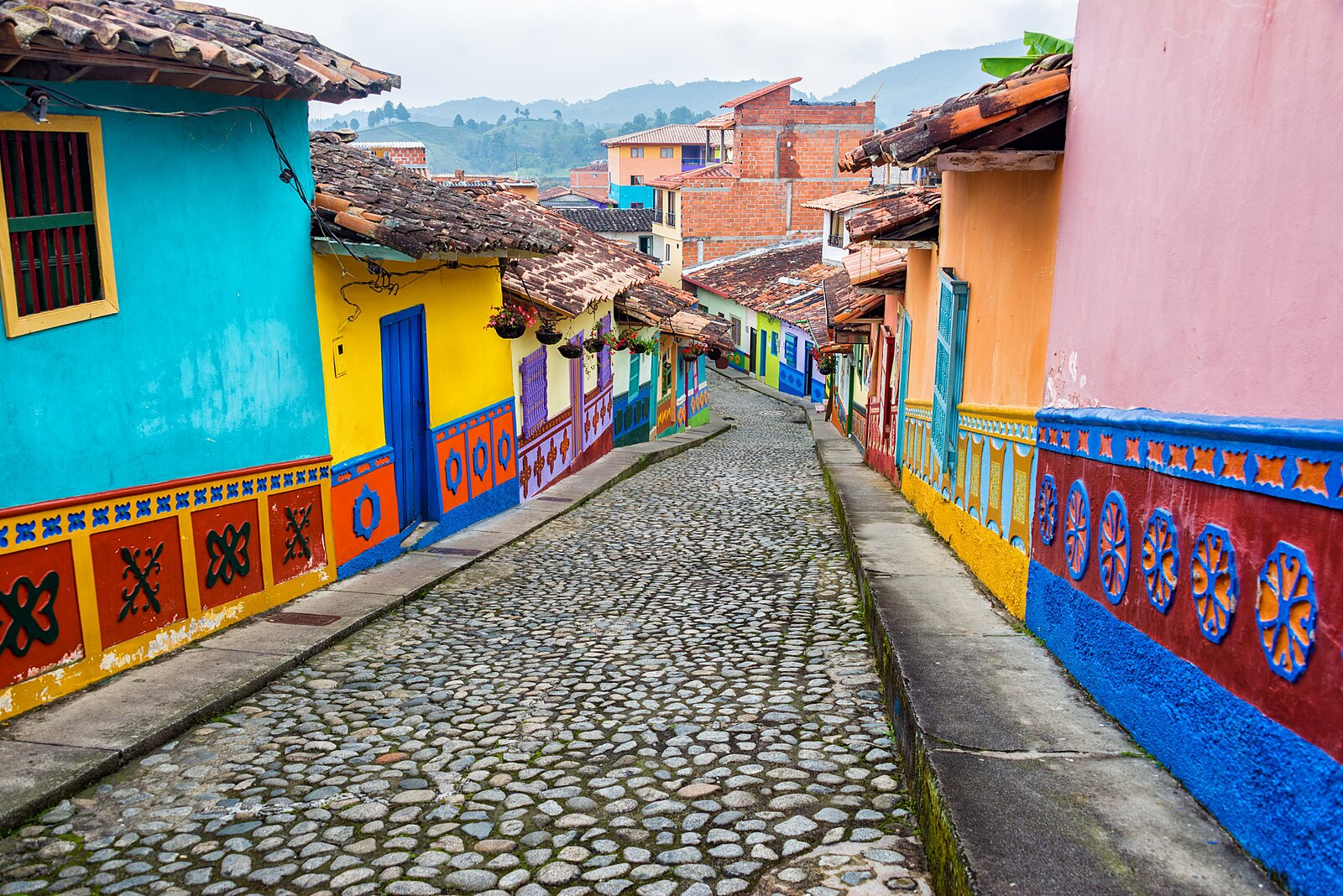The town of Guatape dazzles visitors with its vibrant murals and lively tuk-tuks, blending artistic charm with breathtaking natural beauty.
Tuk-Tuk. TitiNicola. CC BY-SA 4.0
In the lush Andean region of Colombia stands the vibrant town of Guatape. With its vividly painted streets, striking landscapes and a deep-rooted sense of community, Guatape offers a unique experience for travelers seeking a blend of art, nature and adventure.
Calles de Guatape. TitiNicola. CC BY-SA 4.0
One of the first things that strikes visitors to Guatape is the town’s kaleidoscope of colors. Sometimes referred to as the most colorful town in the world, nearly every building in Guatape’s historical center is adorned with intricate and lively “zócalos.” These painted panels reflect a wide array of beautiful images and stories, depicting everything from sunflowers to the town's history. The tradition of painting zocalos dates back to the early 20th century. Today, these murals are a source of immense pride for the residents, who continue to preserve and expand upon this legacy. Thanks to their talent, walking through Guatape feels like stepping into a living gallery.
Guatape Streets. Silasintveld. CC BY-SA 4.0
Towering above the town is the imposing El Penon de Guatape (also known as El Penol), a massive granite rock. At 7,005 feet above sea level, it offers a breathtaking panoramic view of the town. Both Guatape and the nearby town of El Penol consider the rock their own, resulting in the site’s dual names. Estimated to be around 65 million years old, the rock was once worshiped by the Indigenous Tahamí people who regarded it as a sacred object. In the 1940s, the Colombian government declared the site a National Monument.
To reach the summit, visitors must climb a steep staircase of 740 steps that zigzags up the face of the rock. From the top, you can see the Embalse de Guatape, a vast man-made reservoir with an intricate network of beautiful waters and lush islands. You can also find religious relics and a three-story lookout tower. The entry fee for tourists is $6 USD.
El Penon de Guatape. Boris G. CC BY-NC-SA 2.0
The Embalse de Guatape, one of the largest lakes in Colombia, is a vital part of the Guatape’s identity and a hub of activity for locals and tourists alike. The reservoir is a modern creation, the land it now occupies being flooded in the 1970s due to the construction of a dam that now supplies about a third of Colombia's electricity. It has since become a popular destination for water sports and leisure. Kayaking, paddleboarding, parasailing, boat tours, swimming and sunbathing are just a few ways visitors can explore the waters and enjoy the natural beauty surrounding Guatape. Although the Embalse de Guatape has added much to the landscape, it has also destroyed lives; the town of El Penol was drowned by the new lake, its residents resettled elsewhere.
Embalse de Guatape. Juan Almonacid. CC BY-SA 2.0
Adding to Guatape’s lively atmosphere are the brightly colored tuk-tuks, locally known as motochivas, that zip through its streets. These small, three-wheeled vehicles have become an iconic part of the town’s charm. They are decorated with traditional drawings and colors that reflect the owner’s traditions and customs. Though Guatape may be navigated on foot, tuk-tuks offer an affordable and fun way to get around.
Motochivas. Iván Erre Jota. CC BY-SA 2.0
Guatape is a town filled with colorful facades, awe-inspiring landscapes and a welcoming community. From the artistic expressions on every wall to the man-made wonders of El Penol, Guatape offers a captivating experience.
GETTING THERE
Guatape is only a two-hour drive away from Medellin, Columbia, or about 1.5 to two hours by public transport depending on traffic. Visitors looking for a guided experience will find many companies offering tours of the town, and hotels to stay in for travelers looking for more than a day trip. Some travelers recommend staying in Guatape’s city center, as that is where all the public buses and shuttles depart from. You will also find most of the restaurants in this area, and it is easy to find a tuk-tuk.
Rachel Pitcairn
Rebecca studies Italian Language and Literature, Classical Civilizations, and English Writing at the University of Pittsburgh. She hopes to one day attain a PhD in Classical Archeology. She is passionate about feminism and climate justice. She enjoys reading, playing the lyre, and longboarding in her free time.







